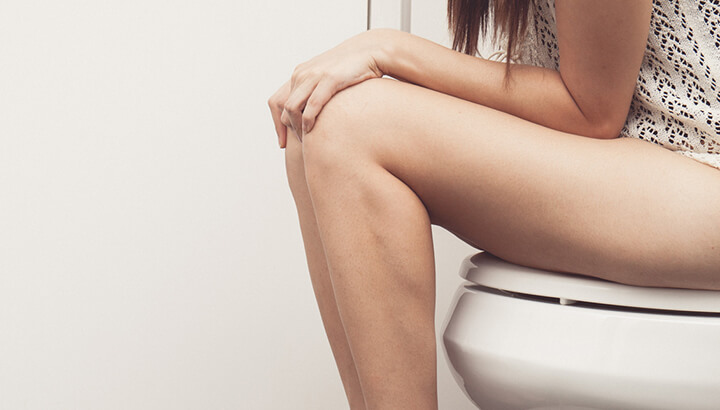
Women have been seeking out that miracle cure for a tighter vagina for millennia. That’s because developing a looser, less elastic Mount Pleasant over time is simply a fact of life. Events such as childbirth, surgery, loss of skin elasticity and less muscle tone over time can all lead to a less-than-ideal situation down below. It’s not a cause for concern. But if you could do something about it easily and naturally, why wouldn’t you?
That’s exactly how millions of women around the world feel. They’re going well out of their way to find that natural remedy that can finally get their vagina looking and feeling like it did in their younger years. But with so much anecdotal hearsay and so little scientific evidence to back up all the claims floating around on the net, how are you to know whether a certain remedy won’t do more harm than good?
Apple cider vinegar appears to be one of those natural remedies that has been touted as an effective treatment for “loose” vaginas. But is there any truth to the claims? Let’s find out.
Can apple cider vinegar tighten and tone?
Let’s look at this logically, shall we? Apple cider vinegar has a wide range of proven uses when it comes to health. These include aiding in digestion, alkalizing the body and dispelling infection both inside and out. I drink raw apple cider vinegar on a regular basis to boost my gut microbiome. I also sprinkle it on my salads to increase their nutrient bioavailability. Additionally, I use it as a natural hair conditioner. But if there’s one thing I’m not going to do, it’s rub it all over my lady parts!
If you’ve ever tasted apple cider vinegar, you will have noticed how intense it is. Did it burn your throat a little as you swallowed it? That’s on account of its high rate of acidity. That’s one of the components of apple cider vinegar (ACV) that makes it so sought after in health circles. Imagine applying that same acidic liquid to your genitals… it would sting like heck! Regular application of ACV to your vagina could actually damage the skin. It could also desensitize the area over time, making your situation worse.
Is there scientific research to back up the claim?

Here’s what the scientific community has to say about ACV in relation to vaginal tightening: nothing. After an extensive search of multiple literary search engines, I couldn’t find a single scientific mention of ACV with regards to the female genitalia. So all these claims are just pure speculation, then.
Finally, when you actually think hard about it, the claims that a vinegar or even a natural topical application of any sort would tighten the skin and muscle of your vagina doesn’t make any sense whatsoever. ACV cannot physically tighten any part of your body, including your vagina. The fact that no-one has bothered to perform any kind of clinical study to verify these claims merely reinforces the conclusion that there’s no truth to the rumors.
But before you despair and start preparing to fork out thousands of dollars for highly invasive, high-risk vaginal rejuvenation surgery, you should know that there are other, natural ways to resolve your problem. One of these solutions involves something called Kegels.
How Kegels can help tone and tighten your vagina
The tightening approach most often recommended by sex therapists is Kegel exercises. Kegels, so named after the doctor who popularized them, are achieved by contracting the muscles used to interrupt urine flow, or to squeeze out those last few drops.
Unlike ACV, Kegels have been extensively studied and accepted by the scientific community. Not only have these exercises been successfully used to rehabilitate painful or non-performing vaginas, they have also been used to improve pelvic muscles both before and after childbirth and reduce urinary incontinence.
Researchers have found that Kegels tighten the vagina by strengthening the muscles that surround it — specifically, the pelvic floor. As these muscles begin to age and lose elasticity due to events like childbearing, Kegel exercises work to reverse that process of attrition. They can make the vagina feel tighter once more.
The beauty of Kegels is that you can perform them at no cost and from the comfort of your own home. They’re not dangerous when performed correctly. They have a very high rate of success. It might feel a bit weird at first, but why not give it a try?
How to perform Kegels

Before we begin, locate your pelvic floor muscles. These are the same muscles you use to control the flow of urine and squeeze it out at the end. For this reason, locating them shouldn’t be too much of a problem!
1. Slowly tighten those pelvic floor muscles as hard as you can.
2. Hold those same muscles in a contracted position for a few seconds, then relax and repeat.
3. Start slowly with just 10 contractions a day. Over several weeks, increase the number of Kegel workouts to half a dozen sets per day. After two to three months, you should be able to easily perform between 50 and 100 Kegels per day.
After a few months, your vagina should start to feel tighter. The obvious side effect of this happy development is that sex will become much more enjoyable. With stronger pelvic floor muscles, your orgasms will be more intense!
If you don’t notice a significant difference in vaginal tightness after 12 weeks of performing these exercises, it might be time to look at alternative methods.
Ben Wa Balls and vaginal toning
While Kegels are undoubtedly effective in treating vaginal looseness, they can be a bit of a time commitment. They also take a number of weeks to start making any noticeable difference. Ben Wa Balls have purportedly been around for far longer than Kegels. Their continuing popularity suggests that they must have a relatively high degree of success.
Ben Wa Balls come in all shapes and sizes, but the premise remains the same. By placing weighted balls inside the vagina, they stimulate a small contraction of the pelvic floor muscles. This contraction is involuntary, brought on by either the weight of the ball inside the vagina or a slight vibration from the woman walking around with the ball inside. It’s weird, I know.
A modern design to these ancient therapeutic balls involves installing one ball inside a larger one, such as in the case of Lelo Luna Beads. With these, the smaller inner ball moves around inside the larger ball. This creates constant vibration that stimulates the pelvic floor muscles to contract. Over a very short period of time, this contract can help to tone the muscles surrounding the vagina. This produces much the same result as Kegels, but with a bit less effort. Not only that, the tingling sensation can actually feel quite pleasurable to many women. This makes the treatment not only a productive one, but an enjoyable one at the same time!
What about squats?

If you take your health seriously, you should already be performing squats on a regular basis. They’re one of the most healthful exercises you can do to work a wide range of muscles and improve posture.
Not only that, the humble squat is also an effective way to tighten and tone your lady mound. Squatting was one of the most common resting poses for our Paleolithic ancestors, who, in lieu of seats, would do a lot of their food preparations and resting in this position. Many cultures around the world continue to place great value in this position. It’s fair to say that Westerners should be doing at least a few squats a day.
Because squatting works such a broad range of muscles, including those of your pelvic floor, it could help to tighten the muscles around your vagina. Performing squats regularly will also help to tone your legs, bum and core. In turn, this will contribute to better sex appeal and more enjoyable intercourse for you and your partner.
To perform a squat, hold your arms out straight in front of you and make as if you’re sitting down onto a chair. You back shouldn’t bend at all — all the bending should take place at the knees, with your torso hinging ford at the hips. Lower yourself down till your thighs are about parallel with the floor, then slowly bring yourself back to a standing position. With this exercise, it’s important to remember that the slower the better. Quickly racing through 20 squats in no time is sure to make for poor posture and a resultant sore back afterwards.
Have you tried any of these techniques? Did they work? Please let us know what your experience has been!
— Liivi Hess

